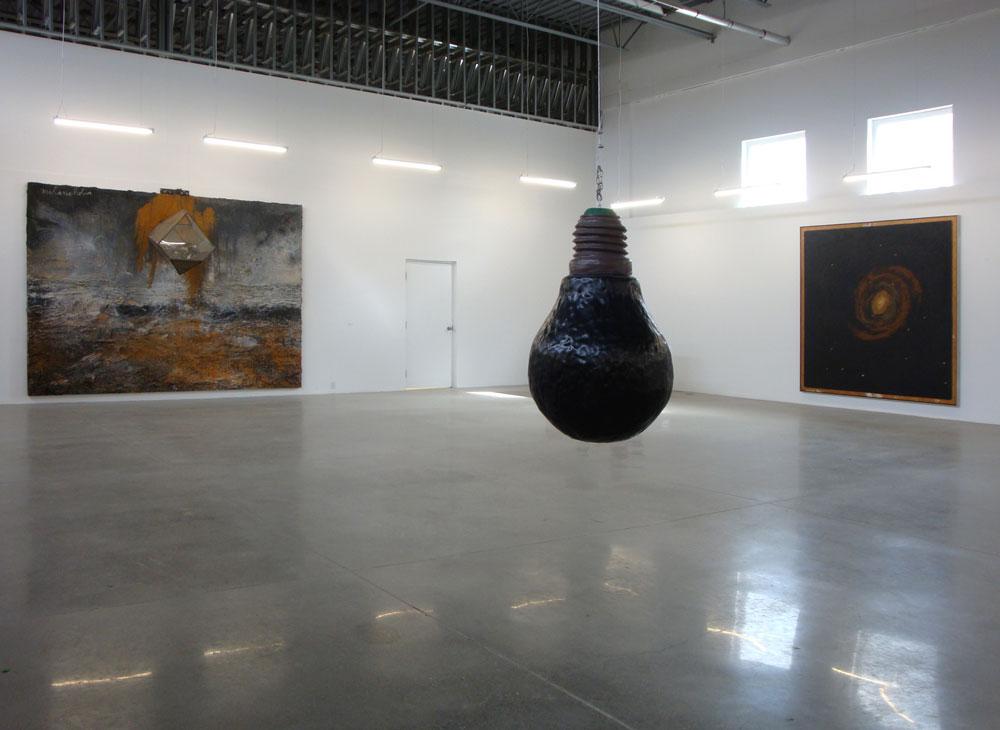The first thing one sees upon entering “Dark Matter,” the current exhibition at Arsenal Toronto, is a floating black blob: Ugo Rondinone’s The Twenty-First Hour of the Poem (2008).
It is meant to be an enormous light bulb, although it lacks sheen or luminescence of any kind. In Rondinone’s conception, it looks more like a gargantuan, desiccated fig. Matte black, pockmarked and wrinkled, it hangs heavily in place, the ambient light of the gallery space highlighting its crevices and throwing the rest of it into deeper shadow.
Of course, the only thing light bulbs do is turn on or off. One wonders what state Rondinone’s bulb is in; if it’s off, what kind of light would emit from this pruney charcoal mass?
The Twenty-First Hour… makes a fitting ambassador for “Dark Matter.” The rest of the work is in a likewise sombre, gothic mode.
There’s Melancholia (2005), a vast landscape by Anselm Kiefer, made of God only knows what (paint and rust, at the very least), with a dirty glass prism extruding from the canvas, hovering precariously just above one’s head. Needless to say, this is not a field of sublime infinity; its materiality implies a crushing density, an expanse of weighty grime.
Directly opposite is Marc Séguin’s Seven Saints (2010), a painting of a bombed-out cathedral, with the saints—untouched, bearing mute witness to the devastation—in the upper tier of the church outlined in pure white. It’s unclear whether this outlining implies a cruel imprisonment or a breaking free from enclosing arches.
Allison Schulnik’s Man Holding Head (2010)—a painting of a monstrous creature—is the other highlight. Scraggly, lumpen and lanky-limbed, limned in thick globs of paint, it is pungently reminiscent of Goya: it has the wide-eyed, troubled expression of Saturn in mid-devour. Emerging from a flat black background, it seems to have crawled out from under the mulch of the subconscious.
What kind of statement is “Dark Matter”? A very deliberate one, and a very clever one, in terms of the gallery: dark matter, in physics and astronomy, central to the Big Bang creation theory, is the backdrop of the universe, the undetectable stuff which (among other things) determines gravitational force.
And so this show declares the gallery’s formation, its gravity, its internal organizing principles. “Dark Matter” is Arsenal’s big bang: nothing gaudy or noisily declarative; a subtly arranged, probing show of by-and-large excellent work by Canadian and international artists at various stages of their careers.
In this light, “Dark Matter” is a portent of a deeply exciting universe.









